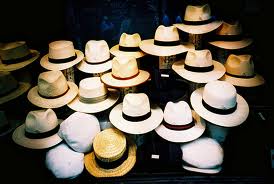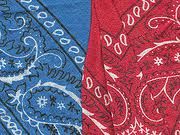
 The shoe was definitely on the other foot.
The shoe was definitely on the other foot.
As a journalist I’ve conducted an abundance of interviews, so it was a different and slightly disorienting experience to wear the hat of interviewee.
Hmmm . . . reversed shoe, interviewee’s hat . . .
While this is not a story about fashion (with the exception of a disturbing comment that I’ll relate shortly), it does cover the perceptions we formed of each other when a group of children from Daniel Freeman Elementary School in Inglewood joined with me and other volunteers at the Culver City Senior Center.
Under the guidance of LEAP (Learning Enrichment After-School Program) and in a collaboration that was made possible by the Culver City Parks, Recreation and Community Services Department, on Friday, May 18 we volunteers were interviewed by the children as part of the Living History Project, with our biographies to be presented when they returned on May 30.
LEAP, which originated in 2004, currently operates at several underserved schools in Los Angeles and surrounding communities, serving over 900 culturally diverse, at-risk elementary and middle school students. It received a commendation from the Los Angeles City Council in 2009 for its ability to produce results and improve lives.
This admirable feat is accomplished at no cost to parents by using the window of time from the close of every school day until 6 p.m. to offer a nutritious snack, homework assistance, tutoring, and creative enrichment classes in order to implement LEAP’s mission: “to develop well-rounded individuals by motivating students to excel academically, encouraging them to dream and teaching them to be healthy, productive citizens.”
“Encouraging them to dream” resonated for me because that’s when the seeds for creativity and change are sown. As our group of volunteers waited in the designated meeting room, I felt excited and privileged to be part of this process for the children.
When they arrived around 2:45 p.m. they were promptly paired with volunteers, and I was the lucky partner of Jamaal and Jeremy, fourth- and fifth-graders, respectively. After we introduced ourselves the boys began interviewing me and, interestingly, they were not operating from a script that had been prepared and given to them. They created their own questions as we went along, veering off onto whatever avenues my responses inspired them to explore.
It was not what I had expected, but so much more.
Their first question (these were boys, after all) concerned the sports I liked. Our interchange set the tone for the remainder of their visit when I responded that although I hadn’t participated in sports because that’s something I’m no good at, I was a great fan of baseball, basketball and hockey.
The words were hardly out of my mouth before Jamaal stated, very firmly and compassionately, “Don’t ever say you can’t do it, that you’re not good at something. You have to have confidence in yourself.” “That’s right,” Jeremy added.
Wow!
I hastened to reassure the boys that I enjoyed being a spectator. Although I hadn’t personally engaged in sports I had a great appreciation for the skills and discipline that athletes possess, and I was very comfortable with myself about the abilities I’ve developed in other areas. And then I remembered that while in college I had actually won a medal in archery, which they were very pleased to hear.
They laughed when I told them about a dear friend who had been a swimming champion during her youth in South America and whose coach had insisted on daily swim practice whether she was sick or well. “And if you’re dead, I expect a note,” he had told her. They nodded in approval when I said her active lifestyle had undoubtedly contributed to her good health today, when she is in her nineties.
Jeremy spoke of his grandmother, with whom he lives, referring to her as “a blessing,” and both mentioned that they enjoyed going to church. It quickly became apparent that these boys were well-grounded and possessed a strong set of values.
When they asked about my favorite color, I responded that there are two I particularly like, purple and red, adding that I felt red was so positive. That created consternation.
“That color can get you killed!” Jamaal cautioned, pointing at my red top. “That’s not a positive color. Do you know about the gangs?”
Gang Fashion 101: Blue and red are not desirable wardrobe choices.
Sadly, although Jamaal hastened to reassure me that he was now living in a much safer neighborhood, I learned that he previously resided where gunshots were a fact of life. They both emphasized that when confronted by gang members and asked the dreaded “Where you from?” question, trying to run is not even an option and “the only way to survive is to use your brain.” They spoke of female relatives who live in dangerous areas and carry knives in their purses for protection.
In turn, I shared my childhood memories of life in the slums, of immersion in poverty and danger when I was their age and younger, and my determination from the time I entered school to use education as my passport to a better life. Skin color aside, we were not really that different. Our goal was to survive.
They were fascinated to learn I was also an artist and cartoonist whose first sale of artwork was accomplished during recess in the schoolyard when I was a child, my motivation being to make enough money to buy a movie ticket which, at that time, cost the munificent sum of a quarter.
They asked what my favorite subject in school had been (English) and I learned that Jeremy was sold on math and history. “I’d like to teach math,” he said. Math was also definitely at the top for Jamaal who, when asked how he planned to use it later in life, had me on the floor with his grinning response: “I see myself just counting my money!”
In the hour or so we were together we hopscotched around a diverse array of topics as we got to know each other. I’m an avid reader whose home is stacked with books and who, as a little girl, made a regular Friday pilgrimage to the library each week to fill my shopping bag with the limit of ten books. Naturally, I asked what books they enjoy reading. The answer was zero. Video games, yes. Books, no. At that, emphasizing that books can truly be our lifetime friends, I requested that they grant me a personal favor by going to their librarian, describing their interests, and asking to be matched with an appropriate book. Keep your fingers crossed . . .
As our time drew to a close Jill Thomsen, the center’s Volunteer Specialist, led everyone to the ukulele class that was in progress down the hall, giving the children a glimpse of one of the many activities offered at our center.
After being warmly and thoroughly hugged by Jamaal and Jeremy prior to their boarding the bus (an encore to the enthusiastic embrace I’d received when our session ended in the meeting room), I recalled a statement in my first post to Culver City Crossroads on May 17, 2012: “ . . . we are innately connected to each other, to every living creature on the planet and to the planet itself, a connection that is as powerful as if we were joined by invisible cords.”
Thanks to the Living History Project, the cords joining Jamaal, Jeremy and myself are now visibly significant for me.
The second and final meeting is scheduled for May 30, 2012. Watch for a post shortly thereafter.


Beautiful article. Sandra’s stories are always illustrate the wonderful things that are happening in Culver City. Imagine all the things that are occurring in the world right now that could make everyone smile. The trouble is, we hardly get to hear about them. Sandra is a beacon of shining bright light.
Sandra’s skill with minds both young and old is remarkable. I am always touched by listening to or reading one of Sandra’s stories.
love to read sandra’s articles. always from the heart, with feeling.